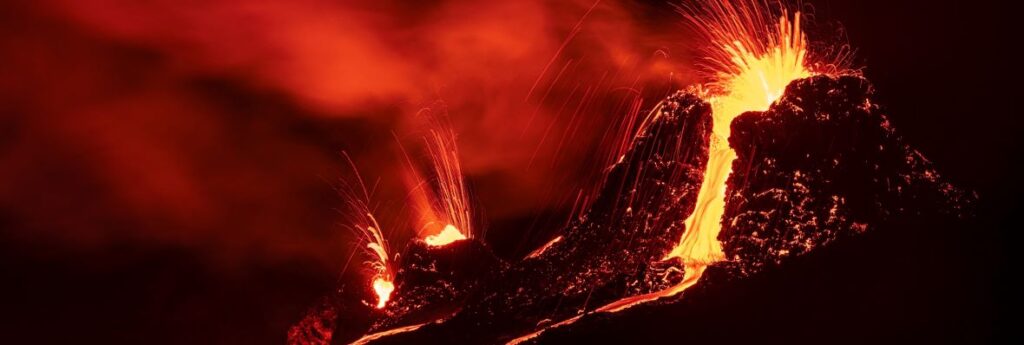With erupting volcanos increasingly serving as beacons to locals and tourists alike, Icelandic authorities are warning people to stay away from a erupting hotspot in southwestern Iceland, which began erupting Monday, 11 months after its last eruption officially ended.
The eruption is in an uninhabited valley near the mountain Litli-Hrútur, some 30 km southwest of the capital, Reykjavik.
The area, known broadly as Fagradalsfjall volcano, has erupted twice in the last two years without causing damage or disruptions to flights despite being near Keflavik Airport, Iceland’s international air traffic hub.
The airport remained open Monday and no flights were affected.
“The lava fissure appears small at first sight,” television reporter Kristjan Unnarsson, who was aboard a helicopter about an hour after the eruption began Monday afternoon, told viewers.
Authorities urged people not to trek to the volcano, citing noxious gases amongst other dangers.
“It is not a little hike,” Kristin Gudmundsdottir, a natural hazard specialist at the Met Office, said. “We need to wait and see how the eruption develops.”
A 2021 eruption in the same area produced spectacular lava flows for several months. Hundreds of thousands people flocked to see the spectacular sight.
Iceland, which sits above a volcanic hotspot in the North Atlantic, averages an eruption every four to five years.
The most disruptive in recent times was the 2010 eruption of the Eyjafjallajokull volcano, which spewed huge clouds of ash into the atmosphere and led to widespread airspace closures over Europe. More than 100,000 flights were grounded, stranding millions of international travellers and causing air travel for days because of concerns the ash could damage jet engines.

